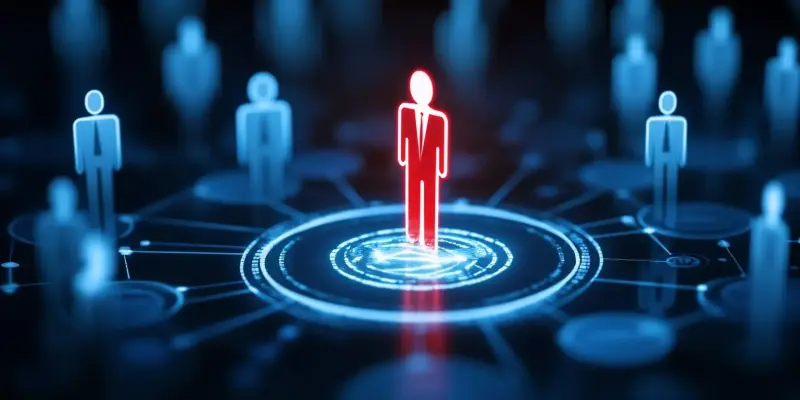The rapid shift from the Information Age to the Intelligence Age is fundamentally transforming how organizations approach talent development and workforce mobility. Chief Human Resources Officers (CHROs) are now facing the challenge of integrating artificial intelligence (AI) into their strategies, which is imperative to remain competitive in an increasingly digital world. Generative AI, in particular, has the potential to revolutionize cognitive capabilities similarly to how the steam engine impacted mechanical abilities. This shift requires a complete reimagining of workforce development strategies to maximize AI’s potential and ensure organizations can thrive in this new era.
Breaking Down Job Zone Boundaries
Generative AI is breaking down the traditionally rigid boundaries between job zones, as outlined by the U.S. Department of Labor’s O*NET system, which categorizes jobs into five occupation groups. This newfound permeability offers CHROs a unique opportunity to revolutionize talent development by enabling greater internal mobility. AI-driven talent development programs can facilitate upskilling and reskilling efforts, allowing employees to transition seamlessly across different job zones. This approach is essential for building a more skilled and adaptable technology workforce, one that can respond to the rapidly changing demands of the business world.
Organizations that lag in adopting a coherent AI strategy risk losing their top talent to more technologically advanced competitors. Forward-thinking CHROs are developing comprehensive AI integration plans that address both technological and human capital aspects. These plans start with an in-depth analysis of current work processes, categorizing tasks into four distinct areas: commoditized tasks that no longer require specialized skills, fully automatable processes, activities that can be significantly enhanced with AI augmentation, and domains that remain entirely human-centric. This detailed analysis allows organizations to identify where AI can best be leveraged to enhance productivity and talent development.
Productivity Left-Shift and Skills Assessment
One notable concept in AI-driven workforce development is the “productivity left-shift.” This approach enables lower-zone workers to perform higher-zone tasks through AI augmentation, leading to significant productivity gains without increasing wage costs. Data from recent studies indicates that early adopters of AI have seen productivity increases ranging from 20% to 30% among employees who have transitioned to higher-zone responsibilities. This shift fosters a skills-first workforce, where employees are valued for their abilities to adapt and grow within the organization, rather than their initial job titles or descriptions.
Implementing these transitions effectively requires robust skills assessment and mapping protocols. CHROs need to conduct comprehensive organization-wide skills audits to understand current capabilities and then create detailed maps outlining the requirements for future AI-augmented roles. Successful organizations identify high-potential employees who can be developed for cross-zone roles and create personalized development paths using AI tools. Additionally, it’s crucial for employees to receive not only technical training but also guidance on how to use AI tools to enhance their productivity and effectiveness in their new roles.
Internal Advancement and Structured Skill Development
For HR organizations to fully optimize their upskilling investments, it’s essential to have clear policies for internal advancement. This involves recognizing and rewarding employees who demonstrate newly acquired skills, prioritizing internal talent promotion over the cost-heavy approach of external hiring. Traditional methods, where CHROs provide online resources for self-directed learning, have proven insufficient in today’s AI-driven workplace. What is needed instead are structured skill development pathways that include instructor guidance to ensure employees acquire the necessary competencies and can collaborate effectively with AI tools.
Managing change is another critical component of AI integration within organizations. CHROs must develop clear communication strategies about AI, addressing any fears and concerns related to job security proactively. By focusing on sharing success stories of internal mobility and closely monitoring employee sentiment and adaptation rates, CHROs can foster a positive environment that embraces AI-driven changes. Transparency about the organization’s journey with AI, paired with publicizing individual and team successes, plays a vital role in managing change effectively.
Governance Framework and Ethical Considerations
A key element of any AI implementation strategy is the governance framework surrounding it. Organizations need well-defined guidelines regarding AI usage in various roles, clear demarcation of responsibilities between humans and AI, and robust ethical frameworks for AI deployment. These guidelines must remain flexible to adapt to the rapidly evolving technology landscape while ensuring compliance with relevant regulations. Establishing a robust governance framework helps mitigate risks and ensures that AI is used responsibly and effectively within the organization.
Early adopters of comprehensive AI strategies are already seeing significant impacts. Some organizations report achieving up to 80% AI tool adoption within 18 months, with annual increases in successful job zone transitions ranging between 15% and 20%. Furthermore, the time required for employees to achieve competency in new roles has decreased by 30% to 40% due to AI assistance. These statistics underscore the transformative potential of AI when integrated thoughtfully and strategically into workforce development practices.
Financial and Operational Benefits
The swift transition from the Information Age to the Intelligence Age is drastically altering the way organizations handle talent development and workforce mobility. Today, Chief Human Resources Officers (CHROs) are confronted with the pressing task of integrating artificial intelligence (AI) into their strategies to stay competitive in a fast-evolving digital landscape. Notably, generative AI holds the promise of transforming cognitive skills, akin to the steam engine’s impact on mechanical abilities. This transition necessitates a thorough overhaul of workforce development strategies to fully harness AI’s potential. It involves not just incorporating AI tools but also fostering a culture of continuous learning and adaptability among employees. By doing so, organizations can ensure they are well-equipped to thrive in this new era of AI-driven innovation. Adapting to these changes is paramount for organizations aiming to maintain a competitive edge and sustain growth in the Intelligence Age. This comprehensive approach is essential for organizations to harness AI’s capabilities and ensure enduring success.

